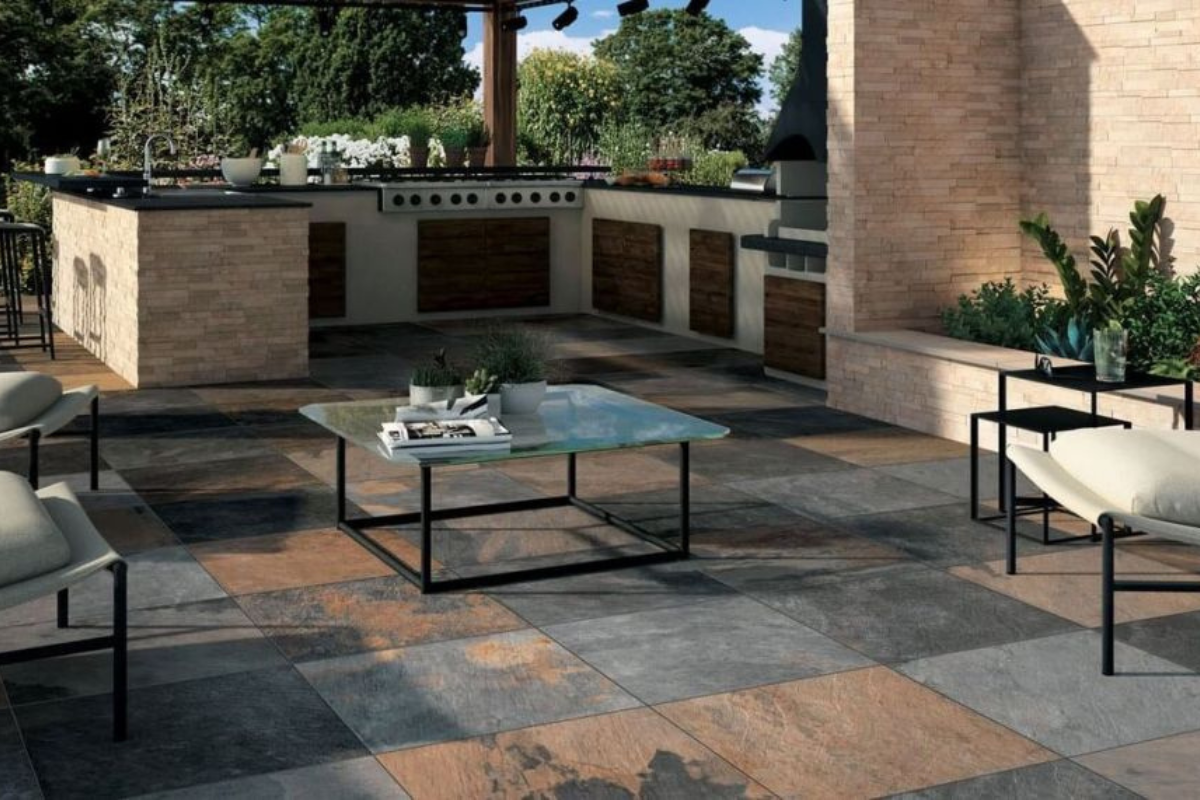Patio floors are essential extensions of our homes, offering a space for relaxation, entertainment, and outdoor dining. However, as much as we enjoy these spaces, they endure constant exposure to harsh environmental conditions, such as rain, sunlight, and fluctuating temperatures. This exposure can lead to a range of issues if not addressed with proper patio floor protection. In this comprehensive guide, we will explore the most common problems that can arise with patio flooring and how the right protection can help prevent them
1. Water Damage and Moisture Intrusion
One of the most significant threats to patio floors is water damage. Whether from heavy rainfalls, spills, or sprinkler systems, water can seep into the floor materials, leading to several problems:
Rotting of Wooden Floors: If you have a wooden patio floor, moisture can penetrate the wood, leading to rotting and decay. This significantly weakens the structure over time and may cause warping.
Mold and Mildew Growth: Water that sits on the surface or seeps into cracks can promote the growth of mold and mildew, creating unsightly stains and posing health risks. Mold growth, especially in the seams and grout lines of tiled patios, is a common issue.
Cracking in Concrete Floors: For concrete patios, water penetration can lead to cracking as the moisture freezes and expands within the material during colder months. This leads to the gradual breakdown of the surface.
By applying a quality waterproof sealant or protective coating, homeowners can significantly reduce the risk of water damage. These protective measures create a barrier that prevents water from penetrating the material, keeping your patio floor looking great and performing well for years.
2. UV Damage and Fading
Another common issue faced by outdoor patio floors is UV radiation from the sun. Constant exposure to the sun’s harmful rays can cause a variety of problems:
Color Fading: UV rays can cause the colors of materials such as wood, stone, and tile to fade over time, resulting in a dull and washed-out appearance.
Surface Deterioration: Prolonged UV exposure can degrade the surface materials, making them brittle and more prone to cracking. Wood may dry out and splinter, while other materials may lose their original luster.
Using a UV-resistant protective coating can help mitigate these issues. These coatings not only help preserve the original color of your patio floor but also add an extra layer of protection against the sun’s harmful effects.
3. Stains from Spills and Debris
Outdoor patios often endure a variety of spills and debris, from food and drinks to leaves and dirt. If not adequately protected, these spills can lead to stubborn stains that are difficult to remove. Some of the most common culprits include:
Oil and Grease Stains: Barbecues and outdoor dining areas are prone to oil and grease spills, which can penetrate porous surfaces like stone or concrete, leaving unsightly marks.
Rust Stains: Metal furniture or garden tools left on the patio can leave rust stains, especially when exposed to moisture.
Leaf and Organic Stains: Fallen leaves, flowers, and other organic matter can decompose and leave behind stains, particularly on light-colored surfaces.
A stain-resistant sealer can provide a protective layer, preventing these substances from seeping into the flooring material. Regular cleaning and maintenance also play a crucial role in keeping your patio floor free from stains.
4. Surface Cracks and Structural Damage
Cracks in patio flooring are a prevalent issue, particularly for concrete and stone patios. These cracks can develop due to various factors:
Freeze-Thaw Cycles: In colder climates, water that seeps into the cracks of concrete or stone can freeze and expand, leading to further cracking and damage.
Weight Pressure: Patio floors often bear the weight of heavy furniture, grills, and foot traffic, which can cause stress on the materials over time.
Shifting Soil: Changes in the ground beneath the patio can lead to uneven settling and the formation of cracks.
Proper floor protection, such as flexible sealants or crack-resistant coatings, can help mitigate these issues. In some cases, reinforcing the patio foundation may be necessary to prevent future cracking.
5. Slippery Surfaces
Another concern for outdoor patio floors is slipperiness, particularly after rain or when spills occur. Slippery surfaces can pose a safety hazard, leading to slips and falls, especially on smooth materials like tile or polished stone.
To avoid this issue, consider applying an anti-slip coating or selecting materials with natural traction, such as textured stone or non-slip tile. Additionally, regular cleaning to remove algae, moss, and other debris that can make surfaces slick is essential for maintaining safety.
6. Insect Infestation and Pest Damage
Patio floors, particularly those made of wood, are vulnerable to insect infestations, such as termites, carpenter ants, and beetles. These pests can burrow into the material, causing extensive structural damage over time.
Termites: Wooden patios are especially prone to termite infestations, which can weaken the entire structure if left untreated.
Carpenter Ants: These ants can hollow out wooden structures, leading to internal damage that may not be immediately visible.
Beetles and Other Wood-Boring Insects: These pests can leave small holes in the wood, which can eventually lead to larger problems.
A pest-resistant treatment or protective coating can help deter insects from damaging your patio floor. Additionally, regular inspections and maintenance will ensure any infestations are caught early before they can cause significant harm.
7. Weathering and Wear Over Time
All patio floors are subject to weathering due to constant exposure to the elements, such as wind, rain, sun, and fluctuating temperatures. Over time, this weathering can cause the material to degrade, leading to:
Erosion of Surface Material: Rain and wind can wear down the surface of concrete, stone, or wood, leaving it rough and uneven.
Discoloration: Prolonged exposure to the elements can cause the color of the material to fade or change, particularly in wood and natural stone.
To combat this, applying a weather-resistant sealant is essential. These coatings can protect the surface from erosion and keep your patio floor looking fresh and vibrant, even after years of exposure to the elements.
Conclusion
Protecting your patio floor from common issues such as water damage, UV exposure, staining, cracking, and pest infestation is crucial for maintaining its longevity and appearance. By investing in the right protective measures, such as waterproof sealants, UV-resistant coatings, and anti-slip treatments, you can extend the life of your patio floor and keep it looking its best for years to come.




